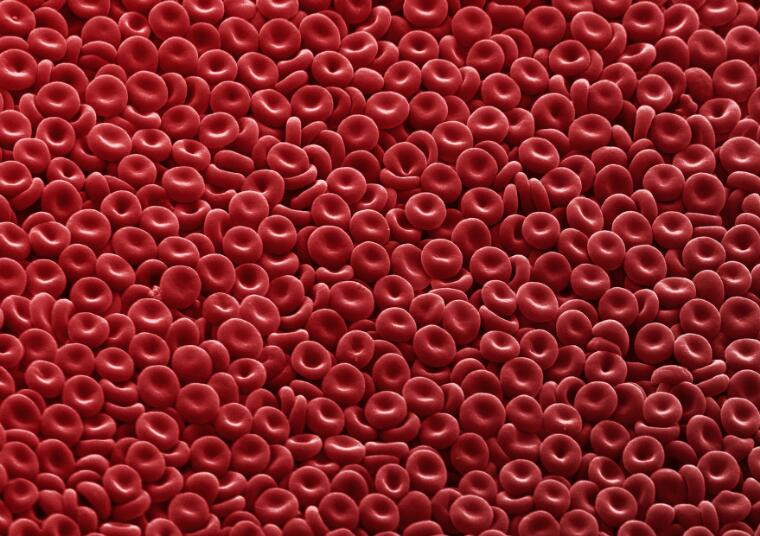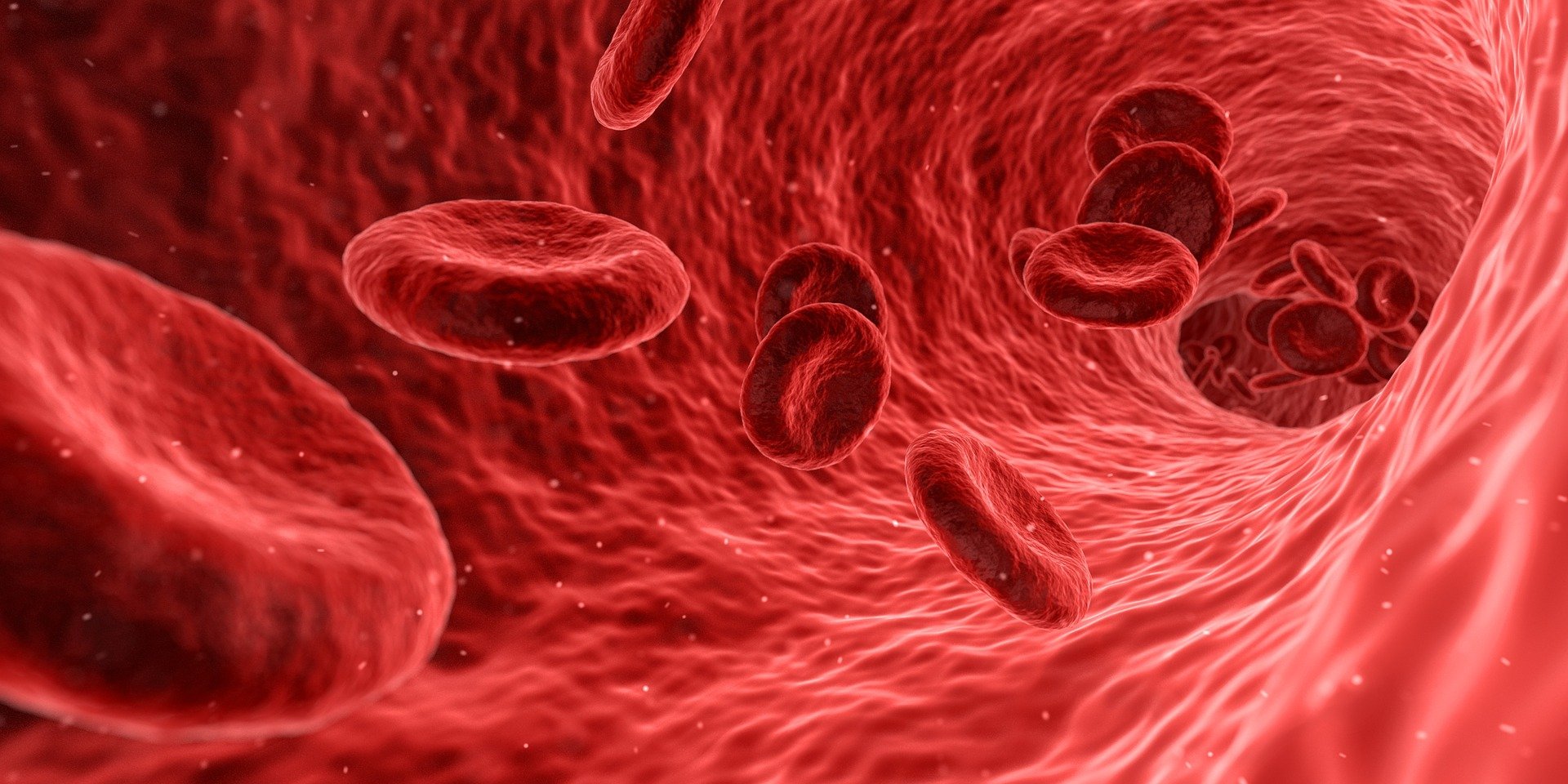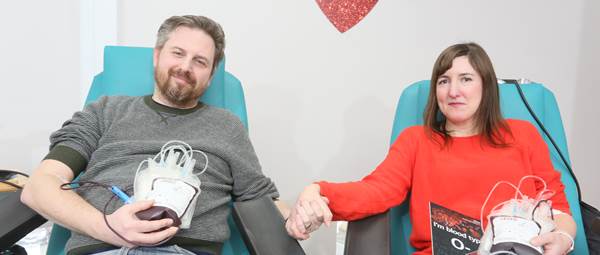Functions of blood: transport around the body
One of the key functions of blood is transport. Blood vessels are like networks of roads where deliveries and waste removal take place. Oxygen, nutrients and hormones are delivered around the body in the blood and carbon dioxide and other waste products are removed.
The heart is constantly pumping blood so it is always moving around the body.
Oxygen
Transporting oxygen is a vital role of the red blood cells.
When we breathe in, the millions of air sacs in the lungs fill with fresh oxygenated air. The oxygen then moves into the blood by passing first through the very thin walls of the air sacs and then into the capillaries, which are tiny blood vessels in a network within the lungs.
 Red blood cells squeeze through narrow capillaries in single file. Haemoglobin molecules inside red blood cells pick up and carry the oxygen. These oxygen-rich cells travel in the blood vessels from the lungs to the left side of the heart. The blood is then pumped around the body.
Red blood cells squeeze through narrow capillaries in single file. Haemoglobin molecules inside red blood cells pick up and carry the oxygen. These oxygen-rich cells travel in the blood vessels from the lungs to the left side of the heart. The blood is then pumped around the body.
Red blood cells are adapted for the transport of oxygen. They are small and flexible so they can fit through narrow vessels, have a bi-concave shape which maximises their surface area to absorb oxygen, have a thin membrane so gases easily diffuse through, and contain haemoglobin which binds to oxygen.
(Picture: red blood cells)
It is the millions of iron-containing haemoglobin proteins that make blood red. Molecules with more oxygen bound to them are brighter red.
When the red blood cells reach tissues that need oxygen, the oxygen is released from the haemoglobin and diffuses into the cells where it is used to make energy.
All the systems in our body rely on oxygen to make energy. If our blood didn’t move the oxygen we breathe into our organs and tissues, we wouldn’t be able to carry out normal functions such as moving our muscles, digesting food or thinking. Blood keeps us alive.
At the same time, red blood cells will pick up waste carbon dioxide that has been released from the cells and entered the blood stream. Red blood cells carrying less oxygen are a duller red colour, which is why deoxygenated blood in our veins is a darker red than oxygenated.
Red blood cells then travel within veins back to the right side of the heart. From the heart the blood is pumped back to the lungs where the carbon dioxide is released from the blood into the air sacs to be breathed out. Air is breathed in, oxygen is picked up by the blood and the journey begins again.

All the systems in our body rely on oxygen to make energy. If our blood didn’t move the oxygen we breathe into our organs and tissues, we wouldn’t be able to carry out normal functions such as moving our muscles, digesting food or thinking. Blood keeps us alive.
At the same time, red blood cells will pick up waste carbon dioxide that has been released from the cells and entered the blood stream. Red blood cells carrying less oxygen are a duller red colour, which is why deoxygenated blood in our veins is a darker red than oxygenated.
 Red blood cells then travel within veins back to the right side of the heart. From the heart the blood is pumped back to the lungs where the carbon dioxide is released from the blood into the air sacs to be breathed out. Air is breathed in, oxygen is picked up by the blood and the journey begins again.
Red blood cells then travel within veins back to the right side of the heart. From the heart the blood is pumped back to the lungs where the carbon dioxide is released from the blood into the air sacs to be breathed out. Air is breathed in, oxygen is picked up by the blood and the journey begins again.
(Picture: the circulatory system)
Nutrients
The blood carries nutrients such as vitamins, minerals, sugars, fats and proteins around the body.
Digested nutrients are absorbed into the blood through capillaries in the small intestine. They are then moved to the cells around the body where they are needed.
The blood vessels near to the cells are small in diameter so the blood flows more slowly, allowing the cells to take up nutrients from the blood and to exchange waste products into the blood to be removed.
Waste products are transported to the organs that remove them from the blood and then eliminate them from the body. For example, excess water is filtered out by the kidneys and toxins are removed from the blood by the liver.
Hormones
The movement of hormones around the body in the blood allows communication between organs. Hormones help control many processes in our bodies including growth, development, mood, metabolism, reproduction and how our organs work.
Hormones are secreted from glands into the blood and then carried to their target organs where they exert their effects. They carry instructions to cells all over the body. Once the hormones reach a target cell they bind to receptors on the inside or the outside of the cell.
By travelling in the blood, hormones can affect tissues and organs far away from where they were produced or have effects on the whole body.
Did you know?
It takes a red blood cell less than a minute to move from the heart, through the body, and back to the heart.
Red blood cells live for around 120 days.
Every second your body makes about two million red blood cells.
An average adult heart pumps about five tablespoons of blood per beat.
Another important function of blood is protection. White blood cells help fight infection and disease. Find out more about the role of the blood in the immune response in the Spring edition of The Donor.

